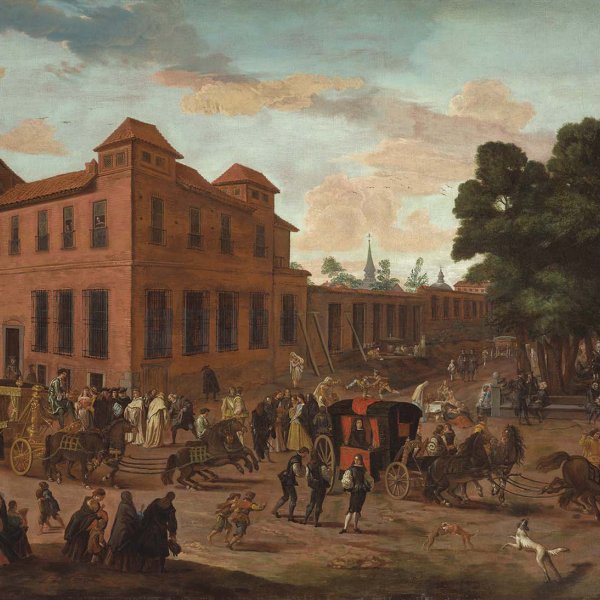Jan van Kessel III (attributed to)
Jan van Kessel was the last member of a dynasty of painters which originated in the 16th century, all of whose members shared the same name. He was born in 1654 in Antwerp where his father, Jan van Kessel "the Elder" (1626-1679), a relative of the Bruegel family, specialised in painting animals, landscapes and flowers, and it was in this environment that the young artist received his early training. He arrived when still young in Madrid at the end of the 1670s, perhaps just before he painted the family portrait in a garden setting of the Flemish noble who was to be his protector during his early years at court and perhaps also facilitated his move from his native country. This Family Portrait of 1679, a typical subject in the Low Countries but not favoured by Spanish taste of the period, is now in the Prado. Van Kessel was painter to Queen Maria Luisa of Orléans and also to the King's second wife, Mariana of Neuberg. Following the death of Charles II, the artist accompanied the King's widow during her stay in Toledo, later returning to court, where he died in 1708. During the last years of his life he portrayed the young Philip V, although apparently with little success.
Very little work by Jan van Kessel III is known. In addition to his Family Portrait in the Prado, mentioned above, there is another painting on this subject in the Warsaw Museum, and an important portrait of dwarves with a dog in the Poznan Museum which reveals the artist's assimilation of the tradition of Velázquez which prevailed in Madrid court painting of the late 17th century. According to Spanish sources of the period, particularly Palomino, who knew and dealt with him, Van Kessel was a painter of great technical merit, and highly gifted in portraiture, the genre to which he mainly dedicated his activities, although Palomino also states that he took part in the decoration of the Galería del Cierzo in the Queen's apartments in the Alcázar in Madrid, painting two episodes from the fable of Cupid and Psyche.
Trained in the Low Countries, Van Kessel's style reveals a painstaking and detailed technique characteristic of Flemish painting, having little in common with the loose brushstroke and free handling of Madrid painting of his time, although he clearly derives the warm palette and importance of light in spatial definition from this school.
Trinidad de Antonio





